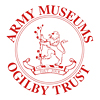

Long Service and Good Conduct Medal
Charles was born in around 1813 in Norwich, Norfolk. We don't know anything about his family or early life.
Towards the end of 1830 Charles worked as a cordwainer, or shoemaker. He must have wanted more from life though, because on the 28th December he enlisted in the 96th Regiment of Foot in Norwich.
When he enlisted Charles was 5 feet 7 1/4 inches tall. He had a 'fresh' complexion, brown eyes and dark brown hair. He was given the service number 676 and made 'his mark' (an 'x') on the enlistment papers. This tells us he could not read or write.
The 96th Regiment were in Halifax, Nova Scotia when Charles enlisted. His discharge papers don't mention serving in Canada, which suggests he didn't join them until they returned to the UK in 1835. They were based in a number of different English, Scottish and Irish towns over the next 5 years, including Edinburgh, Glasgow, Enniskillen, Dublin, Liverpool, Lancaster and Chatham. From Chatham in Kent the regiment began sending detachments to New South Wales in Australia. They were acting as escorts aboard ships carrying convicts sentenced to transportation. The whole Regiment left for Australia in August 1841.
Charles spent a total of 1 year and 5 months in Australia, although we don't know the dates he served there between. The 96th sent detachments from Australia to New Zealand to fight in the Maori Wars between 1844 and 1847. Again, we don't know whether Charles fought there.
The 96th Regiment left Australia in 1849 and moved to India. They were based in Ghazipore (now Ghazipur) and Cawnpore (now Kanpur) in the modern Indian state of Uttar Pradesh. They then moved to Meean Meer near Lahore in modern Pakistan.
Charles was stationed in Meean Meer in October 1852. By this time he was in poor health and a board was convened to decide whether he was fit enough to stay in the Army. The doctor who examined Charles recommended him for discharge 'in consequence of aggravated attacks of opthalmia, lung weak, annuated and worn out'. Opthalmia is an inflammation of the eye.
Charles' conduct had been 'excellent'. He was 'in possession of 4 Good Conduct Badges' and he had been awarded the Long Service and Good Conduct Medal after 21 years of service. Charles left the 96th Regiment on the 31st October 1852 and returned to the UK. He finally left the Army on the 12th July 1853. When he was discharged Charles was still unable to sign his own name.
As a civilian Charles returned to Norfolk and his trade as a shoemaker. In 1861 he lived in or near a baker's shop on Mill Lane in Norfolk. He lived with 2 of his sons. Charles junior was 17 and Robert was 15. They had both been born in Norwich. We don't know anything about their mother, and she had died by this year. We also don't know whether they had any other children.
Charles' life is a mystery until 1881. In this year he was living with John and Elizabeth Pleasant on Magdalen Street in Norwich and still worked as a shoemaker. We don't know where his sons lived.
By 1891 Charles lived alone at 1 Garden Place, near Magdalen Street. He had retired by this year. We believe Charles continued to live in Norwich until he died between January and March 1895. His death certificate tells us he was 80 years old.
Charles' medal was donated to the Museum of the Manchester Regiment in December 1945.




